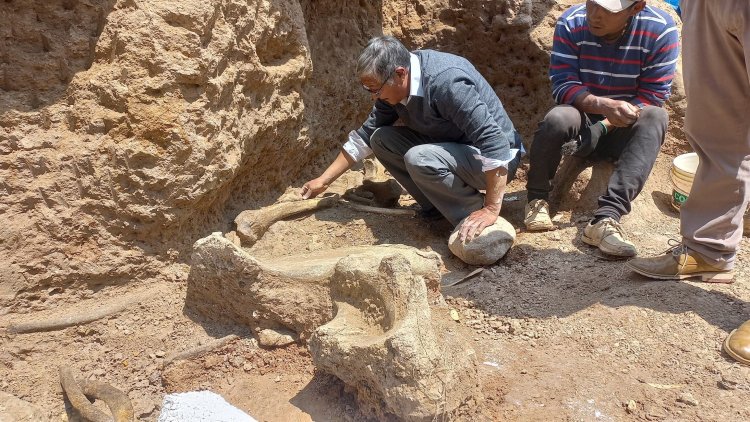Fossilized mastodons uncovered in Peruvian Andes

The fossilized remains of three mastodons from the Ice Age have been uncovered in the Peruvian Andes, raising questions as to how the behemoths arrived in the area.
Excavations starting in 2019 uncovered the behemoths, believed to be between 11,000 and 12,000 years old, in the valley of the town of Chambara, about 300 km east of Lima.
One of the specimens is nearly complete, and could be the most preserved mastodon in all of Peru, said paleontologist Ivan Meza.
“We can’t tell with precision the age of these mastodons yet. They belong to the Pleistocene, which is in the Quaternary period. The Pleistocene ranges from 11,700 years ago to 2 million and a half years ago. The discovered mastodons could be within this span, probably, closer to us -- some 11,000, 12,000 or 10,000 years ago,” He said.
Mastodons were similar to the also-extinct mammoth, but had flatter heads and straighter tusks.
Scientists now hope to find more fossils in the area, which could shed light on how and when the mastodons arrived.
“They are maintained in a very good state of conservation. One of the specimens is almost complete. If we find the skull – everything hints at the skull and tusks are there, but we have yet to get to that level – it would become the most complete and well-preserved mastodon in Peru. And this would have scientific importance nationwide and worldwide,” Ivan Meza said.
The mastodons likely migrated from North America down to South America in search of food and water as climate conditions changed, experts believe.
Peru is a rich source of prehistoric remains. In April, a team of paleontologists unveiled the fossilized skull of a river dolphin, the largest found to date, which had swam through the Peruvian Amazon some 16 million years ago.















